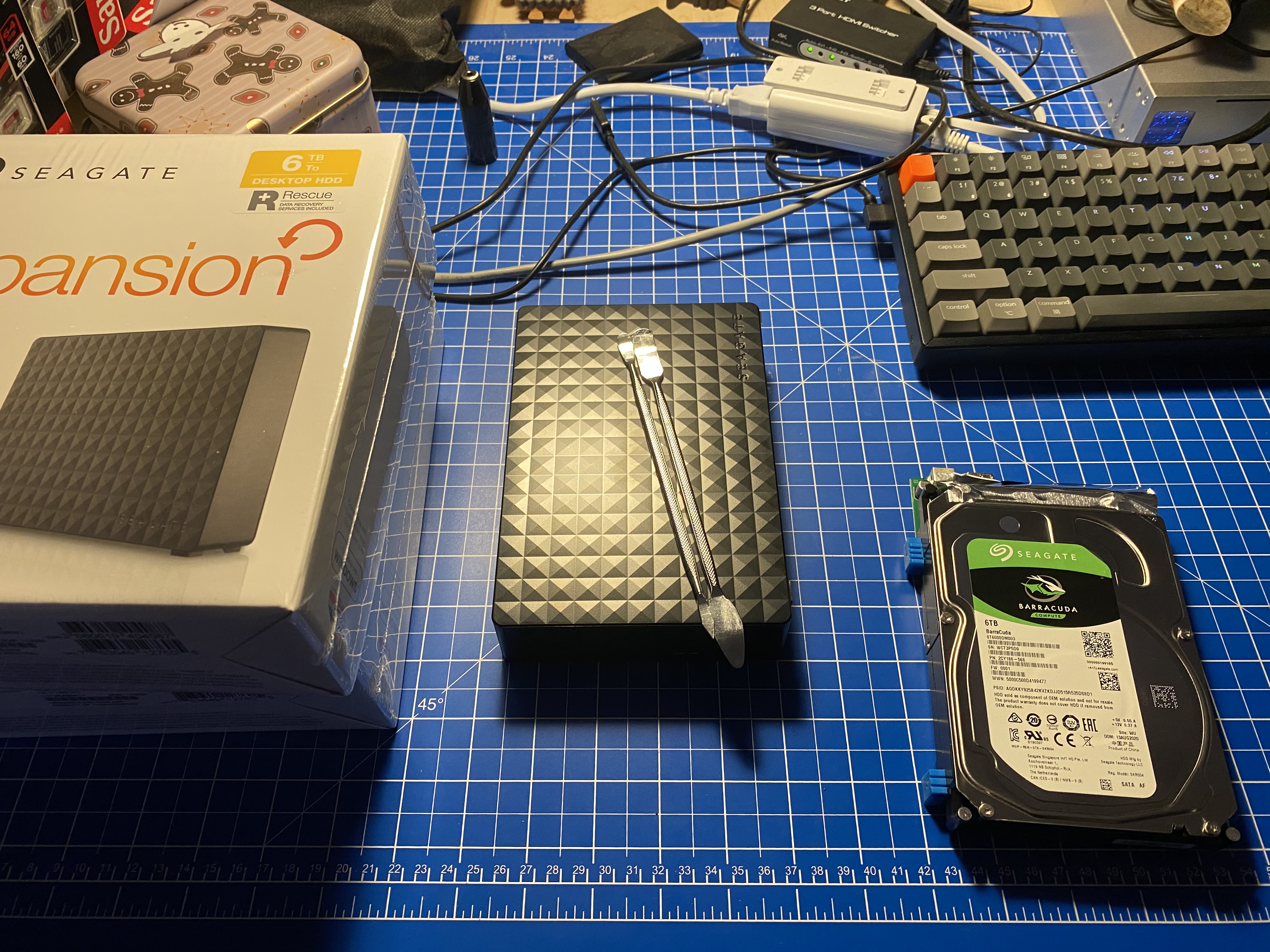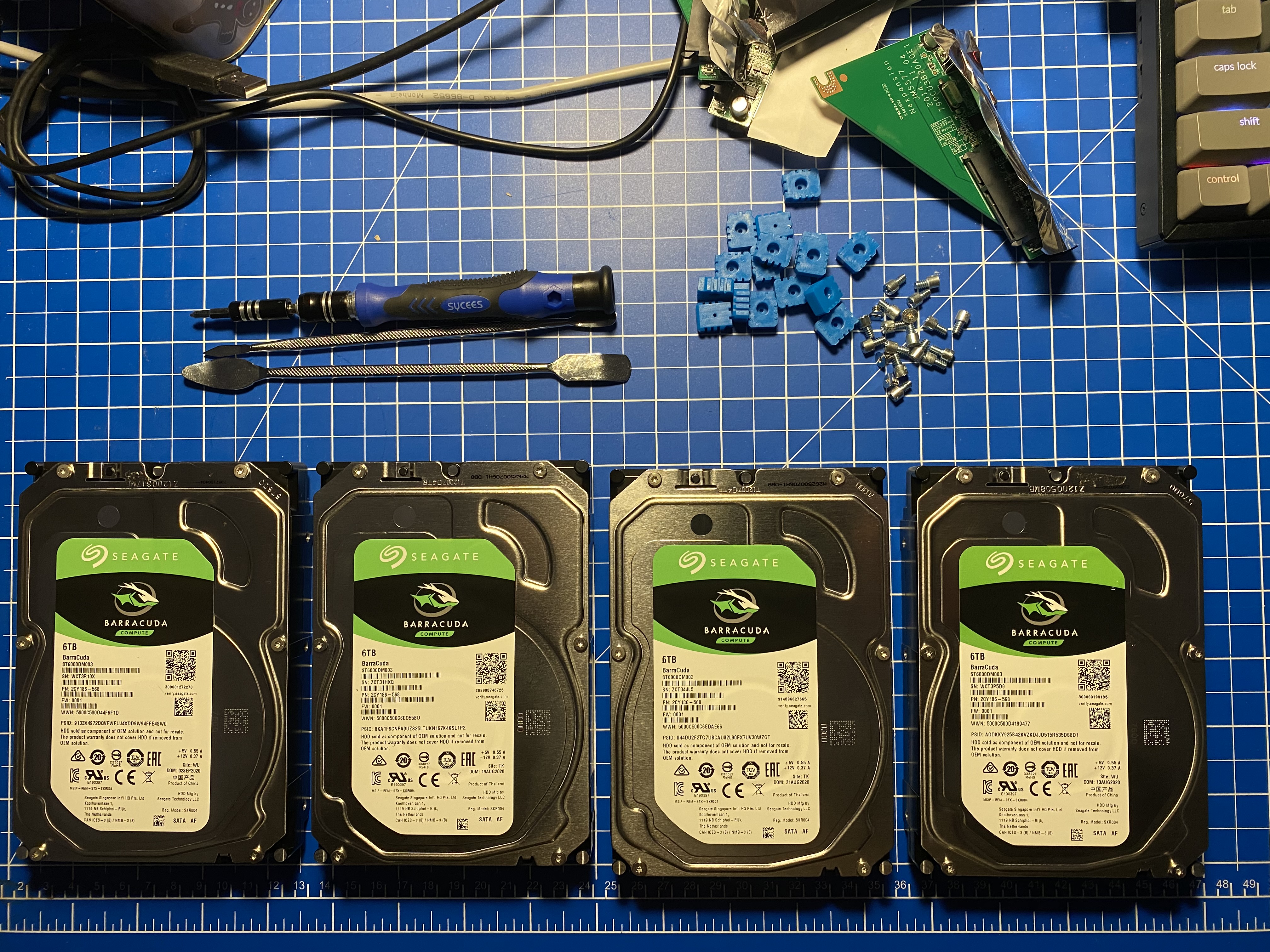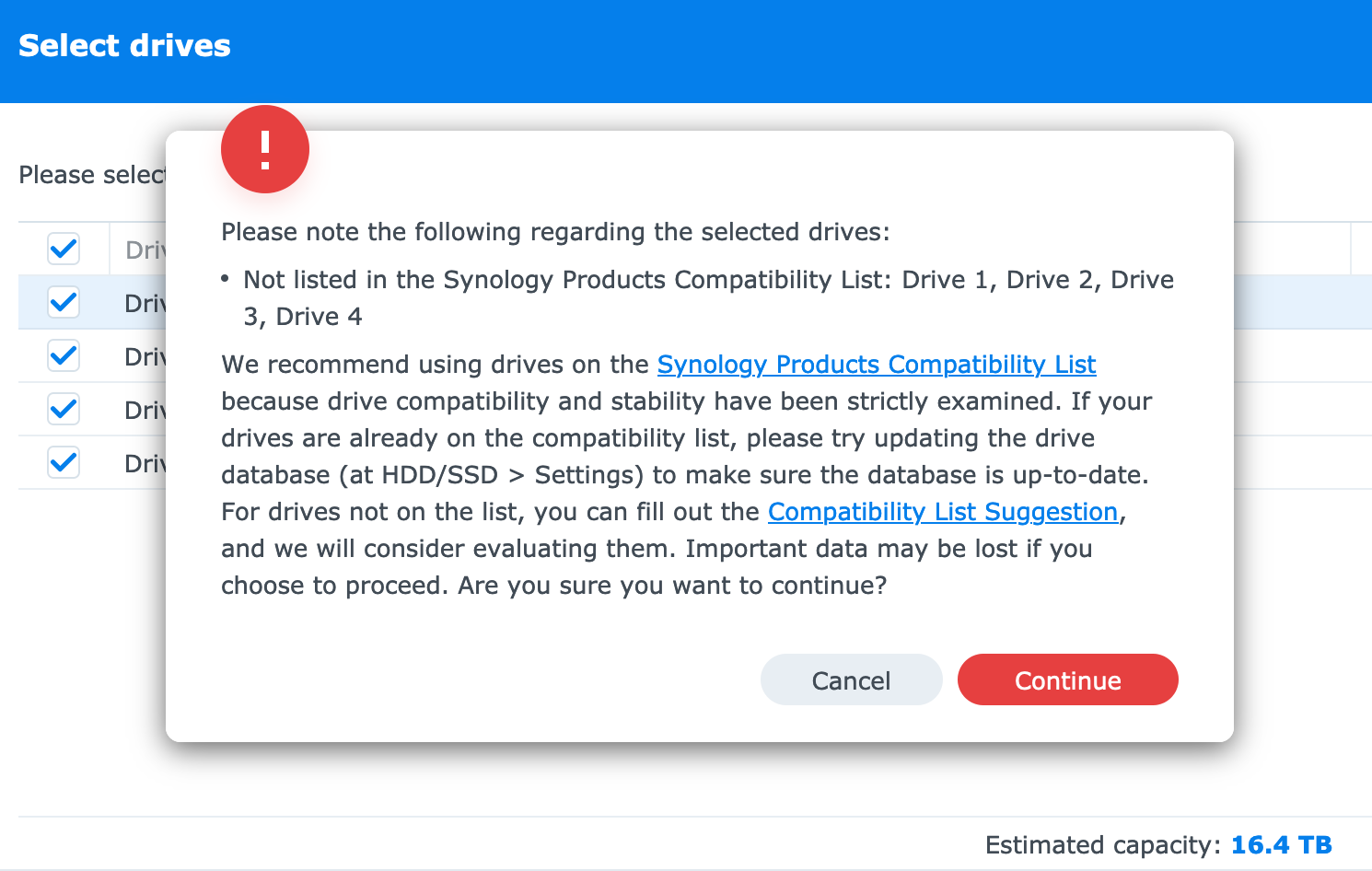shucking disks

We are a week further into this year since the last post - so much for the ambitions of a post a day! A load of things have happened, a week back at work with the accompanying excitement, progress and planning for the next rounds of awesomeness. We have committed to becoming the owners of a puppy (we’ll have a post on that once she has taken up residence …).
For today’s words we will have a quick look at shucking disks. Using
Amazon.de as a guide, hard-disks can be purchased simply.
I have some projects to introduce in the coming weeks where we will require a
reasonable amount of not extraordinarily fast storage. My existing
freenas and unRAID servers don’t
have a lot of space. My aged Synology RS-816 is looking after backup for my
various laptops - it’s time to upgrade its disks!
I would like to go with 6Tb disks - it’s a compromise between space and price - 6Tb disks are about 100 EUR each so relatively affordable.
The curious thing is that an external disk in an enclosure with power-supply and USB cable costs 100 EUR. A hard disk without the consumer packaging, plastic enclosure and power supply costs between 130 and 150 EUR and a NAS approved disk (again without any extra consumer waste) costs 175 EUR. Normally I’d just go with NAS approved disks - but I’m looking to live dangerously and hope to acquire a modest following of bioinformaticians who can shudder at these foolish thoughts. Can we do bioinformatics on a budget?
So, as demonstrated by the picture at the head of this post, I started with four
external hard disks. Using my trusty computer repair kit, I forcibly shucked the
external cases and extracted the four 6TB disks. They are consumer grade
compute disks by Seagate - good enough for a side-project. Let’s see how well
they last!

The image above shows the four disks ready for squeezing into caddies for their future occupancy of the RS816 NAS. The process of shucking was trivial. I am not happy though with the amount of cardboard, plastic and electrical waste that has been left behind. Each of the boxes was plastic wrapped; the plastic drive enclosure was also wrapped and a prodigious amount of cardboard was used to keep everything safe. A nice way to save an additional 30% of cost but now feeling dirty!
So how are the drives being setup? While a 24 (give or take) RAID-0 drive would be magnificent; I have lost more than enough drives in my computing career - a simple RAID-5 is good enough for me!

Synology is clearly a little concerned for my sanity - I have been warned.
We’ll be seeing more from this project in the future - we’ll have some NFS mounts from this server - I’ll keep you posted.